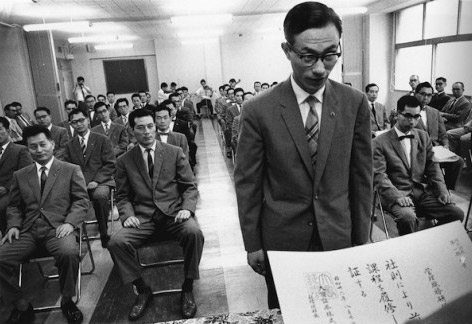
| HOME |
| NERVE |
| REVIEWS |
| ARCHIVE |
| EVENTS |
| LINKS |
| ABOUT US |
| CONTRIBUTORS |
| BACK ISSUES |
| CONTACT US |
Metamorphosis of Japan After the War
 Open
Eye Gallery
Open
Eye Gallery
22nd January - 26th April 2015
Reviewed by Kiran Vegad
Someone took a shit in my lift the other day. Genuinely. That actually happened. Now, I’m not saying I understand the shame and degradation that blanketed a nation in the aftermath of one of the most harrowing periods of modern history, but I’ll leave it to you to draw the parallels that are, inarguably there.
Anyway, Metamorphosis aims to capture the vast societal changes that Japan underwent immediately following the end of the second world war, starting with Hamaya’s The Sun on the Day of Defeat, shot after learning of the surrender, followed by Kawada’s The Map series, picturing the jacket of a schoolboy killed by the A-Bomb, then the scarred buildings left in its wake.
Then later, the remains of a different age: a Lucky Strike packet transformed into a crumpled Japanese flag, a graveyard of Coca-Cola bottles.
This is a nation in flux both across time and within it. Pictures of American GIs sightseeing with their Japanese girlfriends rub shoulders with children sat in the craters they used to call home. Ration queues and smoking orphans with dancers and businessmen. Hamaya’s more rural, traditional scenes show hot springs and rice harvesting but in a way considered jarring and ugly at the time.
There is little sentiment here but much movement and much beauty. By 1962 the renovation is all but complete, highlighted brilliantly by Tanuma’s Playing Volleyball on a Highway Under Contruction. High above the game lurks a giant billboard, “Radio-TV-Tapecorder”, just visible beneath the Sony sign hanging in the air like a nascent god. But still the old scars remain, like the faint whiff of shit in a once pristine elevator. We never could outrun our past.